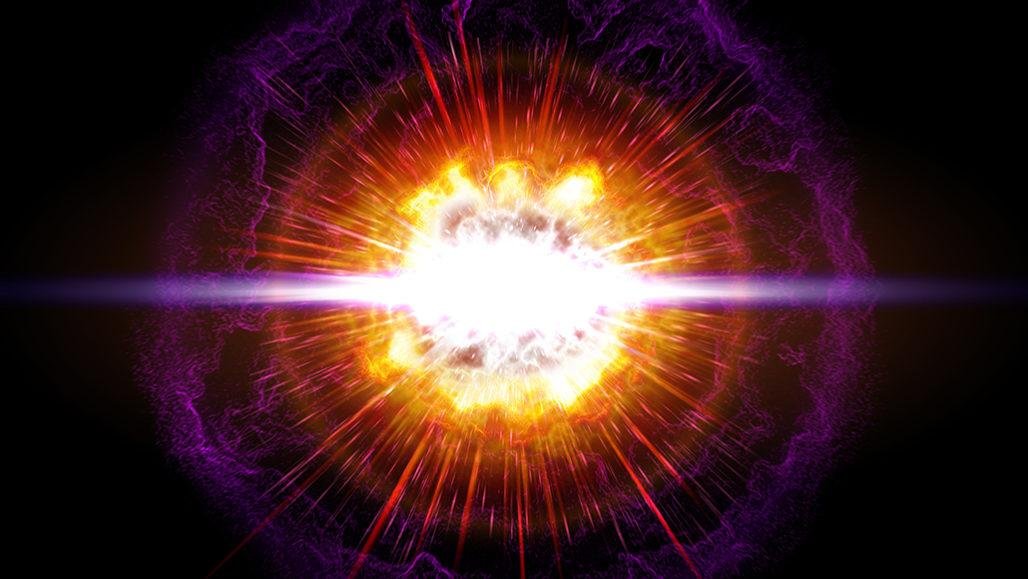Each week, TecMundo and #AstroMiniBR bring together five relevant and entertaining astronomical curiosities produced by the world’s collaborators. profile on twitter to spread the knowledge of this science, which is the oldest!
#1: How can we catch the sound of a celestial body?
Gente, vocês podem estar vendo por aí que astrônomos "captaram" o som de um buraco negro engolindo uma estrela.
Projeto legal, mas não "captamos" nada, pq o som não se propaga no espaço. O que fizeram foi converter, artificialmente, um sinal eletromagnético em som. #AstroMiniBR pic.twitter.com/Xke2fvOP49
— Thiago S Gonçalves (@thiagosgbr) May 5, 2022
The answer is simple: we can’t. At least not directly. Sound is a mechanical wave, so it needs a material medium to propagate. Here on Earth, sound travels through air molecules that transmit vibration in the atmosphere to our ears. This doesn’t happen in space. Even though the vacuum of space isn’t completely empty and devoid of matter, the density of particles isn’t enough to propagate a rock band concert even a meter away from you.
However, to get the auditory meaning of some physical phenomena, scientists often perform what is known as sonification: the conversion of data into sound elements. NASA on Wednesday announced that it has translated electromagnetic radiation data from a supermassive black hole at the center of the Perseus galaxy cluster into audible frequencies.
To create this sonification, the astronomers extracted the data in radial directions, that is, off-center, and read it from left to right, synthesizing the signals within the human hearing range, magnifying them 57 and 58 octaves. likely.
#2: Where did the chemical elements come from?
?? A maior parte dos elementos químicos que conhecemos hoje foram produzidos no interior das estrelas através da nucleossíntese estelar.
O ferro, por exemplo, pode ser produzido quando estrelas com mais de ~8 vezes a massa do Sol terminam sua vida numa supernova.#AstroMiniBR pic.twitter.com/Nl7ihg7L2S
— Thiago Flaulhabe (@TFlaulhabe) May 4, 2022
Stellar nucleosynthesis is the process of creating chemical elements inside stars through the physical processes of nuclear fusion. From the amounts of hydrogen, helium, and lithium formed during the Big Bang since the first stars were formed, the heaviest chemical elements have been made inside stars or in their final stages of life, such as supernova explosions.
In these catastrophic events, most of the first 26 chemical elements on the periodic table appear, from simple elements like helium and carbon to more complex elements like manganese and iron. Other elements were also formed during the explosion, and after the explosion, chemicals in space combined to form more complex ions and molecules. So these elements have traveled through space for millions and millions of years, as part of everything we see around us and in ourselves, until they end up on planets like Earth. As Carl Sagan said, “we are made of stardust”.
#3: Look up!
Se as previsões mais otimistas se confirmarem, poderemos ver uma tempestade de meteoros associada ao cometa 73P/SW na madrugada do dia 31/05. Na previsão pessimista, não veremos meteoros, mas nenhuma noite observando o céu é uma note perdida. [1/2]#AstroMiniBR pic.twitter.com/GoQtZj9oKx
— Projeto Céu Profundo (@CeuProfundo) May 3, 2022
Between the nights of May 30-31 of this year, a major celestial event may occur: a possible brief but intense meteor shower! All this is thanks to a comet that is apparently breaking apart, as observed in 1995. If that happens, Earth’s orbit will pass through the debris flow left behind by the comet, giving us a wonderful view of space rock!
The comet likely to originate from the rain is known by the nomenclature 73P/Schwassmann-Wachmann 3, 73P/SW or SW3. Discovered in 1930, the comet orbits the Sun on average every 5.4 years. While not essentially a bright comet, it will be in the night sky in July and August of this year.
#4: The similarity between the Earth’s surface and the Martian surface.
A área terrestre do nosso planeta é similar a área superficial de Marte, mesmo que Marte seja bem menor.
Com relação à água, mesm emo os oceanos ocupando 71% da superfície da ??, o volume de ?? líquida é 11,4 menor do que o contido na lua Titã e 2,4 - que Europa!#AstroMiniBR pic.twitter.com/wPrFjXBL85
— Ana Carolina Posses (@astroposses) May 4, 2022
When we compare planet Earth with our reddish neighbor Mars, we see fundamental differences between the two planets in terms of physical properties and few similarities between them.
Their sizes, relative distances from the Sun, gravity and some other properties are quite different. But one of the similarities is that Earth’s terrestrial surface is very close in area to that of Mars.
Although Mars is only slightly larger than half Earth (Mars is 6,780 kilometers in diameter and Earth is 12,740 kilometers in diameter), it is significantly smaller than Earth, but the Earth’s surface is about 70% of the Earth’s surface. covered with liquid. This. In contrast, Mars currently has no evidence of liquid water on its surface and is essentially covered in rocks and dust.
#5: Old abandoned Soviet spacecraft
Duas espaçonaves soviéticas da classe Buran e um foguete Energia-M da década de 80 armazenados (abandonados?) em hangares no cosmódromo de Baikonur, no Cazaquistão. O Buran que foi ao espaço foi destruído em 2002 quando o teto de seu hangar desabou.
© David de Rueda#AstroMiniBR pic.twitter.com/MY6gbVn029
— Mariella Patti | #LULA2022 ?? ????? | Ela/dela (@PattiMariella) April 29, 2022
Two ex-Soviet-era Buran space shuttles have been collecting dust for nearly 30 years in a hangar on the Baikonur Cosmodrome in Kazakhstan. These space shuttles were the former USSR’s answer to NASA’s US space shuttle, and both were designed to spread the Cold War into space in the space race.
However, after a single flight Buran was disabled. The similarity between the spacecraft is no accident: The Soviets needed a similarly sized vehicle because they needed to match the payload of the space shuttle, making the project extremely similar to NASA’s.
Source: Tec Mundo
I am Bret Jackson, a professional journalist and author for Gadget Onus, where I specialize in writing about the gaming industry. With over 6 years of experience in my field, I have built up an extensive portfolio that ranges from reviews to interviews with top figures within the industry. My work has been featured on various news sites, providing readers with insightful analysis regarding the current state of gaming culture.












